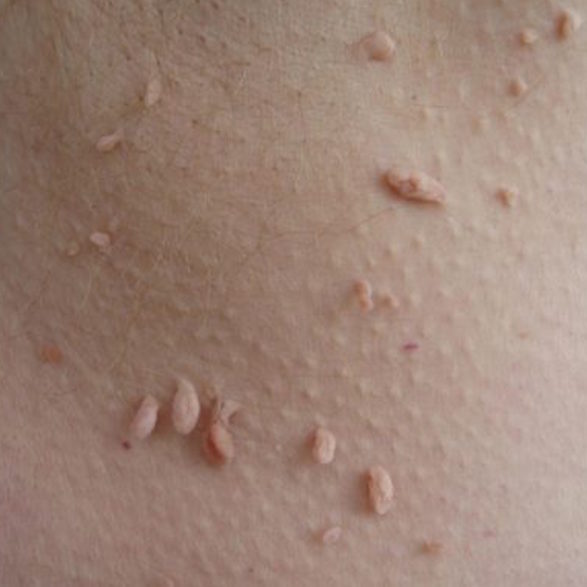
Cutting Ties With Skin Tags
If you have a raised bump or small, hanging piece of skin on your body — you may have what’s known as a skin tag. The good news? They’re not dangerous, and they’re more common than you realize. One in four people will likely grow one at some point! Skin tags are basically benign tumors that can…
Published:
3 minute read
If you have a raised bump or small, hanging piece of skin on your body — you may have what’s known as a skin tag.
The good news? They’re not dangerous, and they’re more common than you realize. One in four people will likely grow one at some point! Skin tags are basically benign tumors that can be easily removed. We’re here to give you all the info on why we get them and how to treat them.

What are skin tags?
Skin tags are a piece of skin tissue that hangs off of your body, and that “tag” consists of fibers and ducts, nerve cells, fat cells, and a covering. They are not painful, and are generally harmless.
Skin tags are also known as acrochordons or cutaneous tags, and can be connected to your skin by a stalk called a peduncle. Skin tags range in size from 1 millimeter to about an inch, and small ones can look like little raised bumps. They’re usually brown or flesh-colored, although black and red ones may occur if the blood supply is somehow cut off or reduced.
These growths appear in places such as our eyelids, armpits, under the breasts, inside the folds of the groin, on the upper chest, and in your neck. While skin tags sometimes occur in children, they’re more common in middle-aged and elderly people.
Why do we get skin tags?
Doctors believe that skin tags develop as a result of friction. They aren’t exactly sure what causes them, but skin tags may occur when clusters of collagen and blood vessels get trapped inside pieces of skin.
Skin tags are more common in obese people, simply because they have a greater chance of having flesh rubbing against flesh. However, there’s a genetic component as well, so if one of your family members has them you may be more susceptible. Hormonal changes during pregnancy can also cause them; if you have high cholesterol levels or high blood pressure, you are more likely to get skin tags. They’re also seen in people who have an imbalance in their estrogen or progesterone levels, and some diabetics and people with the human papilloma virus may develop skin tags.
Unfortunately, there’s no proven way to prevent skin tags, but some doctors say that weight loss may be helpful.

I definitely have a skin tag. Should I see a doctor?
In general, skin tags aren’t harmful, and it’s rare for a skin tag to look like something cancerous. But, certain moles, skin growths, and warts do sometimes look like skin tags.
Although it’s rare, skin tags can be linked to some other conditions, including insulin resistance and polycystic ovary syndrome (PCOS). Because skin tags have the potential to be linked to issues such as diabetes, hormone fluctuations, cholesterol, and high blood pressure, it may be wise to see your doctor if you have one, to make sure everything is okay.
Skin tags can get irritated and become painful depending on their size, and position, in which case you may also wish to see a doctor who can remove the skin tag.
Skin Tag Removal: What To Expect
Skin tags can sometimes disappear on their own. If they don’t, there’s no harm in leaving them alone unless you don’t like the way they look and are experiencing discomfort. Whatever you do, don’t pick at them! They can get irritated and inflamed and under pressure, some can burst so be careful when shaving in areas with skin tags.
Like many other conditions, an online search will yield at-home removal methods, which can be dangerous and lead to bleeding, scarring and infection are potential side effects. Do not attempt removal on your own at home! Instead, have a trained medical professional remove your skin tag in an office — it’s an easy, straightforward procedure.
Skin tags are easily removed with the help of a local anesthetic and a surgical snip, what’s called an excision. A dermatologist may also freeze (with cryosurgery) or heat (using cauterization) skin tags to remove them, or opt for ligation (interrupting the blood supply) to remove the tag instead. Skin tags on the eyelids should be removed by an ophthalmologist, as opposed to a dermatologist because they specialize in eye and vision care.
Whichever the method, the outpatient procedure takes just a few minutes and leaves no marks — you should be able to return to your normal activities immediately with no down time. Your skin tag will be permanently removed, but be aware that there’s a potential for new ones to form in other areas.
Now that you have all the facts, keep your hands off that skin tag and decide for yourself how you want to deal with it!





